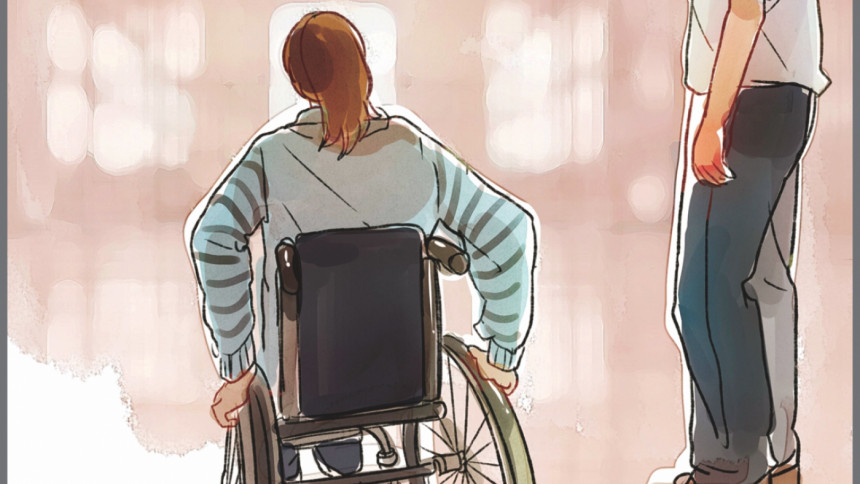Accessibility for the people with physical disabilities

The definition of accessibility refers to the abilities and opportunities to reach desired goods, services, activities and destinations. To add, accessibility must comply with barrier-free environment which means environment designed to be free of obstacles. It is friendly towards people who are physically disabled requiring the use of wheelchairs and prosthetics.
In addition to that, the UN accepts the concise and pragmatic definition of accessibility that refers to provision of 'flexibility' to accommodate each user's needs and preferences. Moreover, Article 2 of the Convention of the Rights of the People with Disabilities (CPRD) provides the definition of universal design of accessibility which includes the design of products, environments, programs and services to be usable by of persons with disabilities where needed. UN has identified a set of universal design principles appropriate to countries:
(a) Equitable use: the design is useful and relevant to a wide group of users;
(b) Flexibility in use: the design accommodates a wide range of individual preferences and abilities;
(c) Simple and intuitive use: the design is easy to understand regardless of the knowledge:
(d) Perceptive information: the design communicates information effectively to the user regardless of the ambient condition or the sensory abilities of the user;
(e) Tolerance for error: the design minimises the hazards and adverse consequences:
(f) Low physical effort: the design can be used easily, efficiently and comfortably with a minimum of fatigue;
(g) Size and space: the size and space for approach, reach, manipulation and use should be appropriate regardless of the body size, posture or mobility of the user.
In Bangladesh, the accessibility situation of physically challenged people is not satisfactory. Being the capital of Bangladesh, even in Dhaka only a few building have pavements and ramps for disabled person. For example, the National Museum, the Parliament Building, Mirpur National Stadium, Bisswa-Shahitto Kendra, University of Dhaka and The Daily Star Building can be mentioned in this regard. When interviewed Salma Mahbub, General Secretary of Protibondhi Nagorik Shangathaner Parishad (PNSP) alleged that even in some ministry buildings there are no ramps or lifts so that a person with disability can go there. Moreover, it is frustrating that even all the hospitals do not have ramps.
The Protection of the Rights of the Persons with Disabilities Act 2013 ensures that public establishments must be accessible to people with disabilities. Moreover, in the Building Construction Act 1952 and National Building Code 2008, it has been stated that every establishment should be designed and accessible to disabled person so that he or she can enter and exit from the building and use of toilet should be ensured. But research shows that in two major cities, in Dhaka and Chittagong, 90%, public buildings are not designed for disable people.
However, few social movement conducted by some leading NGOs and negotiations with authorities' situations are changing. While interviewed the vice-chancellor of Dhaka University, Professor Dr. A A M S Arefin Siddique stated that they have incorporated some disabled student friendly privileges in their plan. Already the authority started modifying all academic buildings of the campus area.
The scenario is not satisfactory also in case of public transport. Though it is found that under section 32 of the 2013 Act, the persons with disabilities have special privilege of having 5% of seats in any public transport but the reality shows otherwise. There is no way that a persons with disabilities can get a seat in any public bus because the buses are full of people and a disabled person even cannot get a ride to a bus. Bus terminals and railway stations are examples of the public places where the accessibility of disabled people should be ensured. Unfortunately there are no visible facilities are found for wheel-chair users in the said public places. Nevertheless, the Minister of Road Transport and Bridges assures that a new Act is coming where reserved seat will be provided to women and disabled person and it must be maintained by all transport owners and employees.
Moreover people with wheelchair do not have easy access to move around by using the pedestrian walkway. The reason for the absence of proper walkway are the illegal and nuisance parking on the footpath, uneven surfaces, signboards, merchandise and garbage on sidewalks, presence of unwanted obstructions, disordered movement of pedestrians and inappropriately installed ramps are the major deficiencies.
So, disability related laws should be enforced and implemented to include them within mainstream development efforts by ensuring their needs. Strategies must emphasise on the importance of simultaneously removing environmental barriers to ensure their inclusion and participation in the society.
The writer is a Lecturer in Law, School of Social science, Humanities and Language (SSHL) Bangladesh Open University.


 For all latest news, follow The Daily Star's Google News channel.
For all latest news, follow The Daily Star's Google News channel. 



Comments